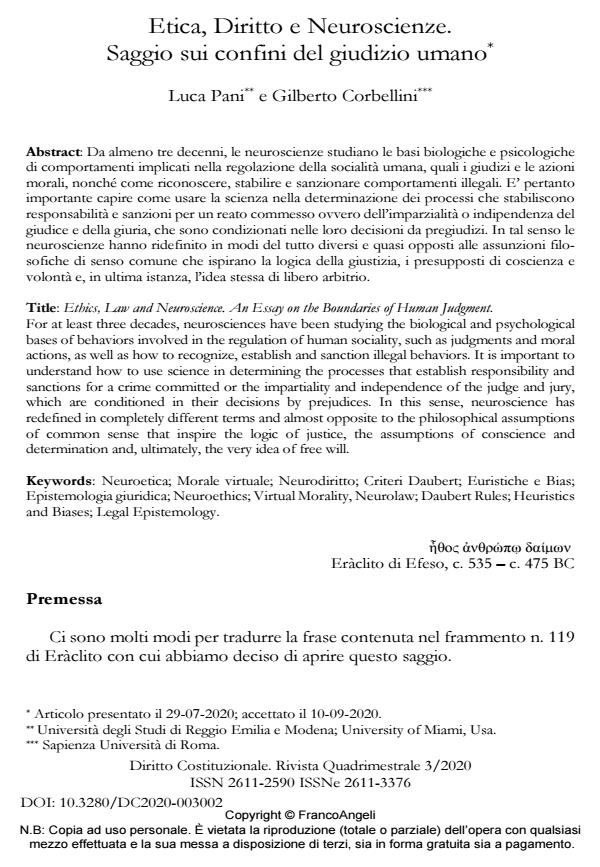Etica, Diritto e Neuroscienze. Saggio sui confini del giudizio umano
Titolo Rivista DIRITTO COSTITUZIONALE
Autori/Curatori Luca Pani, Gilberto Corbellini
Anno di pubblicazione 2020 Fascicolo 2020/3
Lingua Italiano Numero pagine 30 P. 9-38 Dimensione file 283 KB
DOI 10.3280/DC2020-003002
Il DOI è il codice a barre della proprietà intellettuale: per saperne di più
clicca qui
Qui sotto puoi vedere in anteprima la prima pagina di questo articolo.
Se questo articolo ti interessa, lo puoi acquistare (e scaricare in formato pdf) seguendo le facili indicazioni per acquistare il download credit. Acquista Download Credits per scaricare questo Articolo in formato PDF

FrancoAngeli è membro della Publishers International Linking Association, Inc (PILA)associazione indipendente e non profit per facilitare (attraverso i servizi tecnologici implementati da CrossRef.org) l’accesso degli studiosi ai contenuti digitali nelle pubblicazioni professionali e scientifiche
Da almeno tre decenni, le neuroscienze studiano le basi biologiche e psicologiche di comportamenti implicati nella regolazione della socialità umana, quali i giudizi e le azioni morali, nonché come riconoscere, stabilire e sanzionare comportamenti illegali. E’ pertanto importante capire come usare la scienza nella determinazione dei processi che stabiliscono responsabilità e sanzioni per un reato commesso ovvero dell’imparzialità o indipendenza del giudice e della giuria, che sono condizionati nelle loro decisioni da pregiudizi. In tal senso le neuroscienze hanno ridefinito in modi del tutto diversi e quasi opposti alle assunzioni filosofiche di senso comune che ispirano la logica della giustizia, i presupposti di coscienza e volontà e, in ultima istanza, l’idea stessa di libero arbitrio.
Parole chiave:Neuroetica; Morale virtuale; Neurodiritto; Criteri Daubert; Euristiche e Bias; Epistemologia giuridica; Neuroethics; Virtual Morality, Neurolaw; Daubert Rules; Heuris-tics and Biases; Legal Epistemology.
Luca Pani, Gilberto Corbellini, Etica, Diritto e Neuroscienze. Saggio sui confini del giudizio umano in "DIRITTO COSTITUZIONALE" 3/2020, pp 9-38, DOI: 10.3280/DC2020-003002